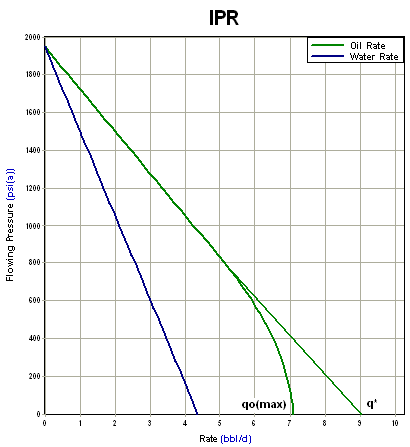IPR Analysis
Liquid flow into a well depends on both the reservoir characteristics and the sandface flowing pressure. The relationship of liquid inflow rate to sandface flowing pressure is called the inflow performance relationship (IPR). By plotting this relationship, the well’s flow potential or rate can be determined at various flowing sandface pressures. This process, called IPR analysis, can be used to determine deliverability for a well producing oil or formation water.
Straight Line IPR
In calculating oil well production it is assumed that producing rates are proportional to the amount of pressure drawdown. Using this assumption, a well’s behavior can be described by its productivity index (PI) as follows:
| Note: | This relationship was developed from Darcy’s law for the steady state radial flow of a single, incompressible liquid. |
Vogel IPR
Vogel showed that as depletion proceeds in a solution-gas drive reservoir, the productivity of a typical well decreases, primarily because the reservoir pressure is reduced, and because the increasing gas saturation causes greater resistance to oil flow.
The result is a progressive deterioration of the inflow performance relationship. This is shown in the following diagram, which compares the straight line IPR with the Vogel IPR.

For water, the IPR is always a straight line since water does not contain dissolved hydrocarbon gas like oil does. The slope of this line is equal to the inverse of the productivity index (PI) as defined above. For oil, the IPR is a straight line above the bubble point pressure, and a curve below that. The curve is generated using Vogel’s (1968) equation defined as follows:
Reservoir Pressure Below the Bubble Point Pressure
Reservoir Pressure at the Bubble Point Pressure
Reference
"Inflow Performance Relationship for Solution-Gas Drive Wells", Vogel, J. V., JPT, Jan. 1968.